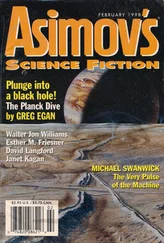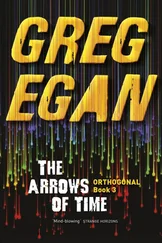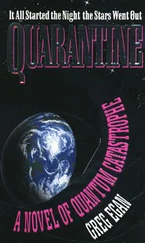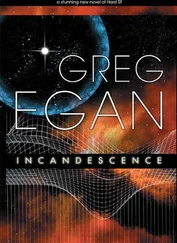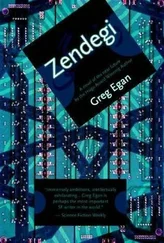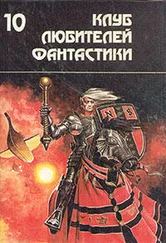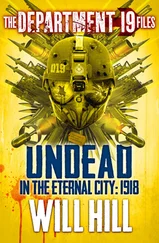Greg Egan - The Eternal Flame
Здесь есть возможность читать онлайн «Greg Egan - The Eternal Flame» весь текст электронной книги совершенно бесплатно (целиком полную версию без сокращений). В некоторых случаях можно слушать аудио, скачать через торрент в формате fb2 и присутствует краткое содержание. Жанр: Фантастика и фэнтези, на английском языке. Описание произведения, (предисловие) а так же отзывы посетителей доступны на портале библиотеки ЛибКат.
- Название:The Eternal Flame
- Автор:
- Жанр:
- Год:неизвестен
- ISBN:нет данных
- Рейтинг книги:4 / 5. Голосов: 1
-
Избранное:Добавить в избранное
- Отзывы:
-
Ваша оценка:
- 80
- 1
- 2
- 3
- 4
- 5
The Eternal Flame: краткое содержание, описание и аннотация
Предлагаем к чтению аннотацию, описание, краткое содержание или предисловие (зависит от того, что написал сам автор книги «The Eternal Flame»). Если вы не нашли необходимую информацию о книге — напишите в комментариях, мы постараемся отыскать её.
The Eternal Flame — читать онлайн бесплатно полную книгу (весь текст) целиком
Ниже представлен текст книги, разбитый по страницам. Система сохранения места последней прочитанной страницы, позволяет с удобством читать онлайн бесплатно книгу «The Eternal Flame», без необходимости каждый раз заново искать на чём Вы остановились. Поставьте закладку, и сможете в любой момент перейти на страницу, на которой закончили чтение.
Интервал:
Закладка:
Amanda flipped the lever to retract the mirror that was diverting light into the eyepiece, then she disengaged the brake on the drive wheel. Carlo tried to keep his mind on his rotating finger and ignore the machine’s whir, surprised by the strength of his urge to hold his whole body expectantly motionless. When he’d first been testing the recorder—with a slab of lamp-lit translucent resin taking the place of his flesh—he’d usually ended up waiting, tensed, for the sound of tearing paper.
“It’s finished,” Amanda announced. She opened the device and extracted the spool, then stretched out a portion of the strip so they could both see it.
It was blank.
Carlo was disappointed, but not greatly surprised. With every trained instrument builder busy on the Gnat or some ancillary project, he’d had to use salvaged components for most of the optics and clockwork, while the way the parts had been brought together was unmistakably a product of his own inexpert hands. The failure he’d been dreading most was that the temperamental system for dispensing the activation gas might stop working again, leaving the paper to run through the machine without being properly sensitized.
“Maybe the viewing mirror’s stuck,” he suggested hopefully.
Amanda bent toward the eyepiece. Carlo was still mechanically twiddling his finger. She said, “Not unless it stuck halfway, because I can’t see anything.” She pushed the lever to reinsert the mirror. “And I still can’t.”
“So I’ve been torturing myself for nothing?” Carlo joked. “The voles will be pleased. Maybe something else has slipped out of alignment.”
“Wait, what was that? You stopped—”
He’d stilled his finger. “Yes.”
Amanda said, “When you stopped , there was a burst of light.”
Carlo started up the motion again, slowly and deliberately. “What do you see now?”
“That’s… back to how it was at the start.”
He said, “Show me the rest of the recording strip.”
Amanda unspooled it completely. At the start of the recording the paper displayed a long sequence of dark streaks, the density of the pigment rising and falling in a complex pattern. Only the last quarter of the strip was blank.
Carlo said, “Check the eyepiece again.”
Amanda complied. “The signal’s still visible.”
Carlo tried to distract himself, to think of anything but his rotating finger. “How’s your co?” he asked.
“He’s fine,” Amanda replied, surprised by the question. “He’s just switched to a new job, doing maintenance on the main cooling system—ah, the signal’s gone again.”
“Either there’s an intermittent fault in the optics,” Carlo said, “or my finger doesn’t really need to be told what to do all the time. If the instructions follow a simple pattern, the flesh soon gets the message and the brain stops repeating itself. Until—”
He halted the twirling.
Amanda said, “There’s that burst again. A ‘stop what you were doing’ signal?”
“That’s what it looks like.”
“We should get that on tape,” she suggested.
Carlo agreed. They spent the next bell and a half capturing the signals that initiated and halted dozens of different movements, trying to exhaust all the possibilities while the probe was in place and the recorder was still working. They ran out of paper before Carlo was entirely satisfied, but by then he was glad of any excuse to extract the probe and resorb his abused limb.
Amanda left him; she had two pairs of voles ready to mate in the pathway suppression experiments. Carlo stayed harnessed to the bench, looking over the recordings.
The patterns for all the repetitive motions he’d tried were, gratifyingly, roughly periodic. In fact, if he coiled each strip into a broad helix of just the right width he could place each cycle right beside its successor, and see the same instructions arriving again and again. Then the pattern faded out until the “stop” signal came—and that was virtually identical in every case.
On a finer scale, though, the sequences remained mysterious. The brightness and duration of the individual pulses varied enormously, and there were no obvious recurring motifs. So how did his flesh interpret these instructions? Were there detailed commands for each muscle fiber, spelling out every contraction? Or was this more like a sequence of symbols or sounds, strung together to form words in some ancient somatic language?
Tosco had conducted an ingenious study where he’d dyed the flesh in a lizard’s extremities, color-coded by its initial position, and shown that after being resorbed it could turn up in any other labile region. The flesh that had comprised a certain toe one day could easily find itself in the middle of a limb the day after. But that didn’t settle the question as to whether the flesh “knew” which role it was playing at any given moment, or whether that responsibility fell entirely to the brain. Each time the body reshaped itself, did the brain tell the new toe-flesh “Now you are a toe”, allowing them both in later conversations to take certain toe-ish understandings for granted? The signals Carlo had recorded for repeated motions—spelled out the first few times, then left to his finger’s own initiative—suggested that the brain didn’t micro-manage everything, but the initial instructions seemed far more detailed and complex than he would have expected if they were merely specifying a selection from a pre-existing repertoire of possible finger movements.
Carlo looked across the workshop toward Tosco’s bench. Nine years after his first dye studies, he was still repeating the experiments—and that wasn’t out of laziness or inertia. He kept refining the techniques and gathering more data, painstakingly building up maps that showed the way flesh moved within a lizard’s body as it adopted various postures.
Nine years was nothing in the history of this field. A lifetime was nothing. Carlo gazed at the streaks of pigment on the paper in front of him, and realized that he still hadn’t solved one simple, practical problem: the paper was darkest when the light had been most bright. If he ever hoped to send these recorded signals back into his body, he’d need a way to modulate the light source in precisely the opposite fashion: making it bright when the paper was dark.
Amanda returned with the preliminary results from her two vole matings. The whole brood in the second suppression test had been stillborn—but as ever it had been a brood of four.
She took one of the strips of paper from the bench and held it up to the light from a nearby lamp.
“So… you’ll run this beside a second, sensitized strip?” she asked. “To duplicate the pattern with the density reversed?”
Carlo stared at her in silence, dumbstruck for a moment. Then he came to his senses and replied, “Of course.”
11
“Air,” said Ivo. “Air is what remains when the fiercest flame has consumed its fuel entirely. There’s nothing safer, nothing more stable. In the worst case imaginable—if the orthogonal rock acts as a liberator for all of our solids—we should still be able to manipulate it with jets of air.”
Tamara looked around the small chamber, wondering if anyone else shared the secret thrill she felt at the prospect Ivo was raising. What could be more terrifying than a universal liberator: a substance that could set anything on fire? And what could be more exhilarating than finding a way to cheat that danger, to grasp the ungraspable in invisible hands?
Massima, the lottery winner, appeared to be growing less at ease with each word she heard. When she’d first put her name down for a chance at this jaunt there’d been a lot less talk of explosions. Ulfa, the chemist appointed by the Council to oversee the project, was as calm and businesslike as ever, raising neat rows of notes on her chest as Ivo spoke. Only Ada, who’d beaten six other astronomers in their own mini-lottery for deputy navigator, showed any sign of excitement.
Читать дальшеИнтервал:
Закладка:
Похожие книги на «The Eternal Flame»
Представляем Вашему вниманию похожие книги на «The Eternal Flame» списком для выбора. Мы отобрали схожую по названию и смыслу литературу в надежде предоставить читателям больше вариантов отыскать новые, интересные, ещё непрочитанные произведения.
Обсуждение, отзывы о книге «The Eternal Flame» и просто собственные мнения читателей. Оставьте ваши комментарии, напишите, что Вы думаете о произведении, его смысле или главных героях. Укажите что конкретно понравилось, а что нет, и почему Вы так считаете.

